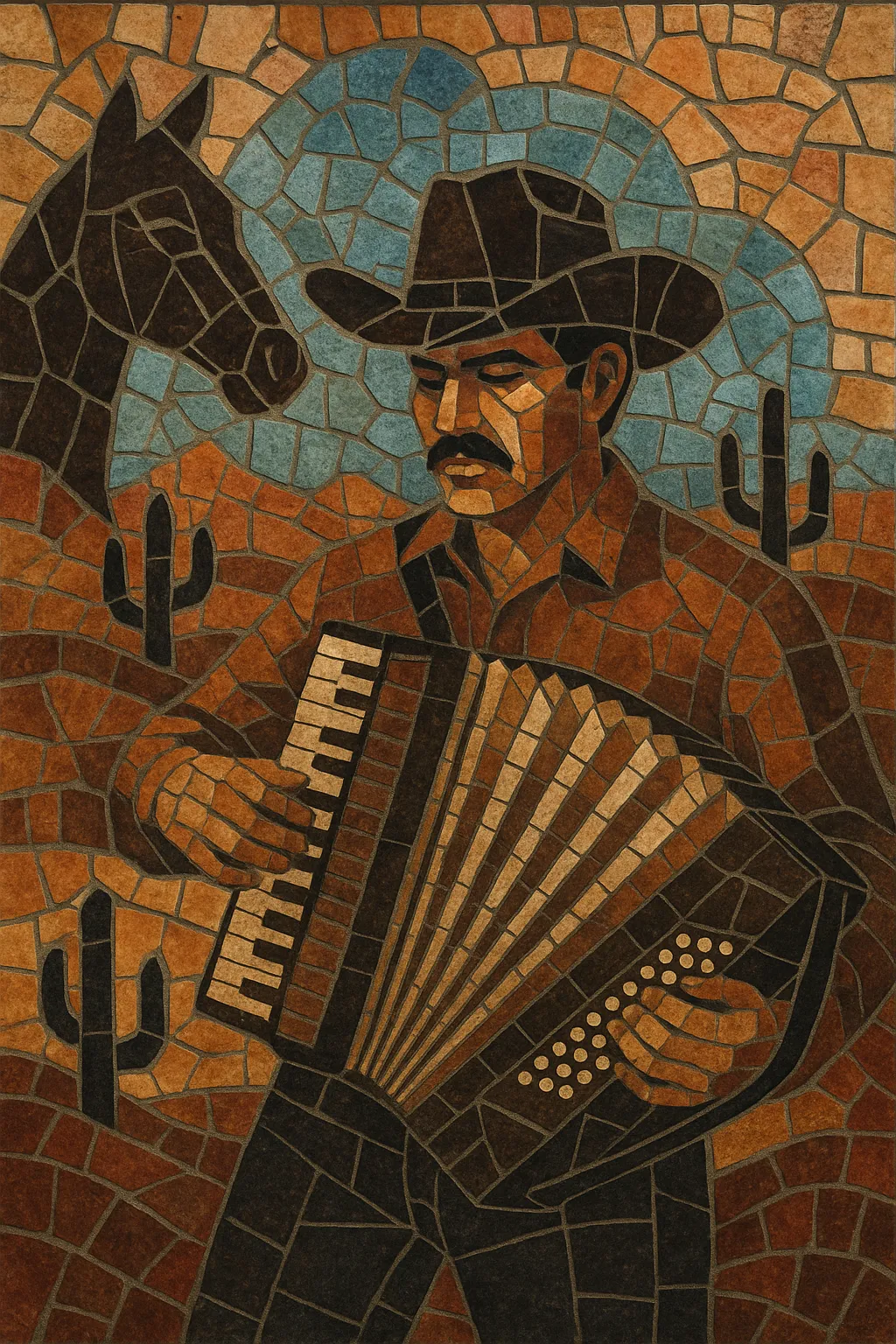Corrido is a Mexican narrative ballad tradition that tells real or imagined stories about heroes, outlaws, battles, tragedies, and contemporary events. It is strophic, usually built from octosyllabic lines organized into quatrains with assonant rhyme, and features a declamatory vocal delivery designed to make the storyline clear.
Musically, corridos are commonly set to dance-derived rhythms such as polka in 2/4 or waltz in 3/4, reflecting 19th‑century European influences absorbed in northern Mexico. They are performed by different ensembles—most famously norteño groups with accordion and bajo sexto, mariachi with violins and trumpets, or banda with brass and tuba—yet the poetic form and storytelling remain central.
Typical corridos open with a saludo (greeting/announcement), present the narrative in chronological episodes rich with names, places, and dates, and close with a despedida (farewell or moral). Modern variants include narcocorridos and, more recently, corridos tumbados that fuse the narrative form with contemporary urban and trap aesthetics.
Corrido grew out of the Spanish ballad (romance) tradition and local Mexican song forms, crystallizing along the U.S.–Mexico border in the 1800s. Its strophic, octosyllabic verse, and narrative focus reflect Iberian poetry, while polka and waltz rhythms—brought by Central and Eastern European immigrants—shaped its musical gait. Early corridos chronicled frontier conflicts, notable crimes, and community heroes.
The Mexican Revolution propelled corrido to national prominence. Singers reported on battles, leaders, and social upheaval, turning the genre into a grassroots chronicle. Many classic corridos circulated as broadsides and were performed in plazas and cantinas, serving as news, commentary, and communal memory.
With radio, records, and cinema, corridos reached wider audiences. The form adapted to various ensembles: mariachi, conjunto/norteño, and later banda. Artistic figures popularized historical and heroic corridos in films and on stage, helping codify formal conventions such as the saludo, episodic narration, and despedida.
From the 1970s–1990s, corridos increasingly addressed migration, labor, and illicit economies. The rise of narcocorridos—revived and reshaped by influential performers—sparked debate about representation, censorship, and the ethics of storytelling while reaffirming corrido’s role as a mirror of contemporary life.
Digital platforms fostered new hybrids. Corridos tumbados blend traditional storytelling and sierreño/norteño instrumentation with trap drums, 808s, and urban vocal phrasing, attracting international listeners. Despite stylistic innovations, the genre’s core remains the same: a narrative ballad that preserves and debates lived experience.


